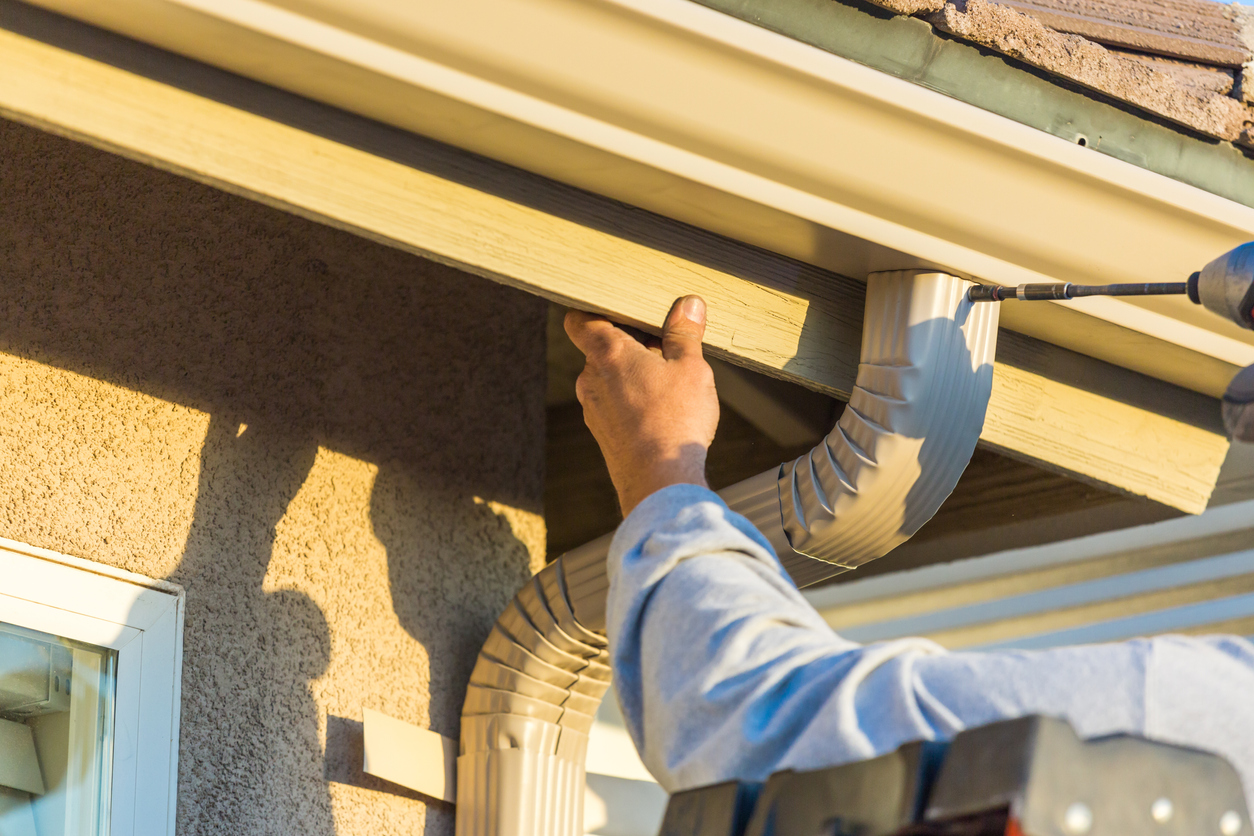Most homeowners understand the importance of installing gutters, but some may be unsure about what exactly they need to do. Don’t worry: here we provide a complete overview of gutter solutions, from figuring out how to install the gutters, how much material you need and how to keep them clean once they’re up.
Design
There are two considerations to think about when designing the best gutter system possible on paper: the length of the gutters and how wide they need to be. The first part is fairly straightforward: you and a friend can simply use a measuring tape to figure out the length of the roof along each slope.
But what about the width? Determining the correct width is a little more involved. First, check local zoning laws: it’s very possible a local official has already determined the gutter size you need. You’ll have to figure out the square footage of your roof – which is easy to do using basic math – and note the average rainfall of the area in which you live. The bigger your roof and the more rain you get, the bigger your gutters will need to be. The most common residential gutter size is five inches. For downspouts, a good rule of thumb is one for every 40 feet of guttering.
Next, you’ll need to choose your material. All materials have individual benefits and drawbacks; as a general rule, choose the most durable material you can afford in the thickest size it comes in.
Installation
If you’re installing the gutters yourself, first lay them out in front of the part of the house where you’ll be installing them. Weld on any end caps and cut out any holes for downspouts you may need, then go up and install the hangers, keeping safety in mind.
Install the hangers on architectural supports, such as rafters, and space them closely together. This keeps the gutters from sagging, which can lead to stagnant water or to them being ripped off your house during high winds. Hang the gutters so there’s a slight pitch towards the downspout; one to two inches every 40 feet should work just fine. Weld together any corners and attach the downspouts with welding or zip screws.
Maintenance
Maintaining gutters is simple: every three months or so, go up and take a look at them. If you don’t have a gutter protection system, clean out any debris that may have accumulated. There are dozens of tools on the market to help with this. Keep an eye on your gutters, looking for signs that they’re not draining, such as icicles or water dripping over the sides of the gutters. Patch any holes as soon as possible.
For a permanent solution to gutter cleaning, call us for the professional installation of Gutter Helmet® gutter shield, along with Helmet Heat® heated gutters. Do all this and you’ll have long-lasting gutters that keep you dry even in the worst weather!

